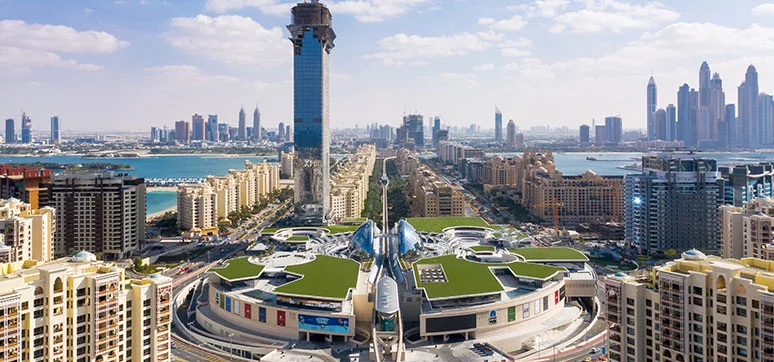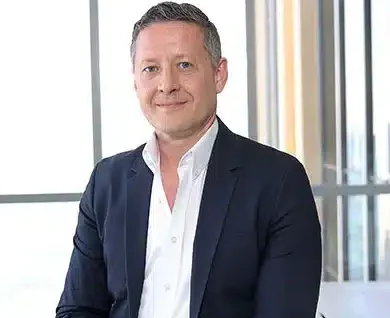RSP is a well-known name in the architecture field. What makes you one of the leaders in the field? What is your key success mantra?
RSP has been successfully in operation for 65 years and managed to complete over 2,500 projects worldwide. When we set up the design studio in 2009 we brought with us the expertise, skill-set, and creativity of the RSP legacy combined with our talented team on the ground that adds the local know-how and individual talent. RSP has been a global leader in educational, hospitality, mixed-use, and master planning projects for decades thanks to the vast in-house talent pool and exceptional clients that continuously push the boundaries and help us to excel. Our mantra is very simple –
1. Understand the client’s brief
2. Produce a world-class design on time and budget
3. Deliver a sustainable and value adding project to our client’s portfolio.
What are the milestones you have achieved to date?
We just celebrated 10 years in the MENA region with our office in Dubai. We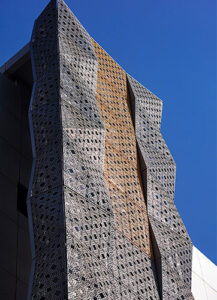
What inspired you to become an architect?
My parents both are architects and my father successfully ran his office for over 35 years before retiring. I have early memories of doing homework in his office where I observed his passion, his creativity, and his eye for detail. I must have been 10 when I realised that this is what I want to do in my life- to continue the legacy of Steinhauer architects.
RSP has won many awards for its work. Could you please name some of them? Which project is close to your heart?
RSP has been fortunate to be recognised internationally globally for our projects abroad highlighting our efforts in sustainability and innovative buildings.
Locally, we are very proud to annually received awards for projects and individuals in the company including me. In 2019 I was named Executive of the Year by MEC Awards and in the same year, we won Architectural Firm of the Year. In 2020, the monumental project Hindu Mandir bagged Project of the Year under Retail &Public Facilities category in MEC Awards and Concept of the Year for CID Awards.
Khalifa University was my first project at RSP and until today it is very close to my heart. I saw the project from design to completion and you get very attached through the process and the hard work you put in. It was a truly collaborative effort and success thanks to the university, our client, our design team, and later the contractor. Even years later when you walk down the internal spine you feel a sense of pride and happiness seeing it build and in use.
Could you please talk about your projects featuring very innovative and different kinds of façade and fenestration designs (in the Middle East)?
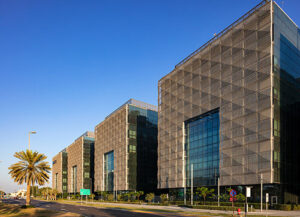
We have explored the best of the available façade solutions for the Nakheel Mall and Palm Tower projects in Dubai. Be it suspended glass facades spanning across 25 meters below the Monorail, to digital LED screen envelopes to low reflective cold-bent glass panels for the rooftop sky restaurant. This landmark project stands out due to its cutting-edge façade design.
For the Hindu Mandir, as the project is a building of cultural and spiritual significance, the façade design and material selection was a unique and careful process. Metals such as gold, silver, copper, bronze, iron, and other alloys are traditionally used for different purposes such as the bells, flooring, the idols, and even the façade of the traditional temples. The reasoning behind the material selection was not only for the aesthetic or practicality but because it is believed that these metals absorb the earth’s magnetic waves and radiate them to the surroundings.

Therefore, we have used a bronze metal alloy material to reflect the cultural aspects of the project. This bronze metal alloy can be seen in two large portals which frame a view of the temple. This material is also integrated into a number of bronze Jalis throughout the façade design.
The patterns of the Jali are traditionally used throughout the construction of temples. The decorative screen in Hindu architecture forms a perforated stone or latticed screen, usually with an ornamental pattern constructed through the use of calligraphy and geometry. Functionally, the jali helps in lowering the temperature by compressing the air through the holes. In the Mandir project bronze Jali walls, provided security and privacy while toying with light and shadow.
The Sarasvati River played an important role in Hinduism and is depicted throughout our project as a river of light that was created through the use of backlit stone. This key design feature creates a river of light that moves through the landscape and into the main building. The river of light forms part of the spiritual story of the temple.
How do you go about choosing the material of the façade and cladding?
The façade design is firstly influenced by the location, the climate, and building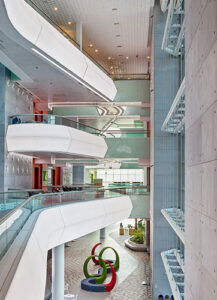
We in RSP are hopeful and positive that there will be a recovery of the market this year. In particular, the mega-scale projects in KSA will help to restart the market and revive confidence for 2021 and the years ahead. Nevertheless, we are taking the opportunity to revisit our modus operandi in terms of technology, efficiency, and quality.
What are the major challenges in the architectural segment in the Middle East?
The global pandemic of 2020 is by far the most challenging circumstance that the entire design and construction industry is facing at the moment. We hope that the impact will be shorter and less severe than the global financial crisis of 2008.
What opportunities do you see for the architects in the region?
Visionary leaders in the region are still driving amazing opportunities for architectural companies in the MENA region. KSA is the main driver for sure but there will be opportunities as well in the UAE, Qatar, Kuwait, Bahrain, Oman, and also East/North Africa and our latest trading partner Israel.

What are your views on the future façade and fenestration technologies as well as materials?
Prefabricated and 3D printed materials/modules are already changing the aesthetic opportunities to express designers’ intent and bring it to reality. Parametric design technology changed the forms, buildability, and affordability of free forms. 3D printed modules will take this to another level and take the industry to a new limitless era in terms of design.
What is your advice for young and upcoming architects?
Never lose your dream and even in challenging times like right now use the time to enhance your skill sets and design talent. Perhaps utilise this time to further your education and obtain a master’s degree. Remember to always look beyond your drawing table. You must view a project holistically and once you define the massing and internal planning, spend enough time to study the façade design and remember to factor in the latest trends, technical developments, and newest products.
